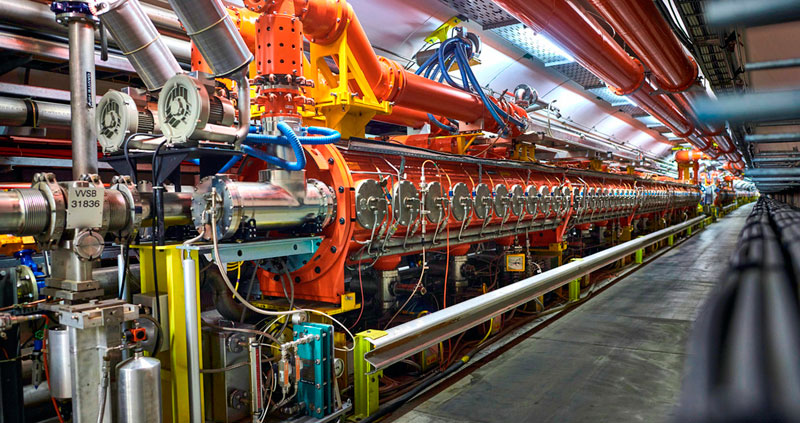Scientists have finally managed to measure and quantify an invisible coupled resonance structure that can cause loss of particles contained in the Super Proton Synchrotron and create problems for its research, reported the team of physicists from the European Organization for Nuclear Research (CERN). ) that operates that particle accelerator.
The phenomenon occurs in phase space, which can represent one or more states of a moving system. Since four states are needed to represent the structure, the researchers studied it in four dimensions: both in the horizontal and vertical planes, to check if they exist. “In accelerator physics, thinking is usually focused on a single plane,” explained physicist Giuliano Franchetti from the Helmholtz Heavy Ion Research Center in Germany, who also participated in the study.
“With these resonances, what happens is that the particles do not follow exactly the path we want and then they fly and get lost,” the expert explained. “This causes beam degradation and makes it difficult to achieve the required parameters,” he added.
The phenomenon of resonance occurs when two systems interact and synchronize. For example, planets can experience an orbital resonance when there is a gravitational interaction as both celestial bodies orbit a star.
Particle accelerators use powerful magnets to create electromagnetic fields that help direct beams of particles in the direction desired by scientists.
However, due to an imperfection of the magnets in particle accelerators, resonances can occur, which leads to the emergence of a magnetic structure that interacts poorly with the particles.
To understand the effect of this resonance on a beam of particles in an accelerator, scientists took several years and had to use computer simulations. The information obtained finally allowed the magnetic anomaly to be measured.
Physicists observed the position of a particle beam at the Super Proton Synchrotron, a 6.9 km long particle accelerator located in Geneva, Switzerland, and were able to measure the position of particles from approximately 3,000 beams. The resonance map in the accelerator was created by measuring how the particles are located: closer to the center or displaced to the side.
“What makes our recent discovery so special is that it shows how individual particles behave in a coupled resonance,” said CERN physicist Hannes Bartosik, one of the authors of the study, published in Nature Physics.
“With this study, together with all the previous ones, we hope to obtain clues on how to avoid or minimize the effects of these resonances for current and future accelerators,” concluded Franchetti. With RT
